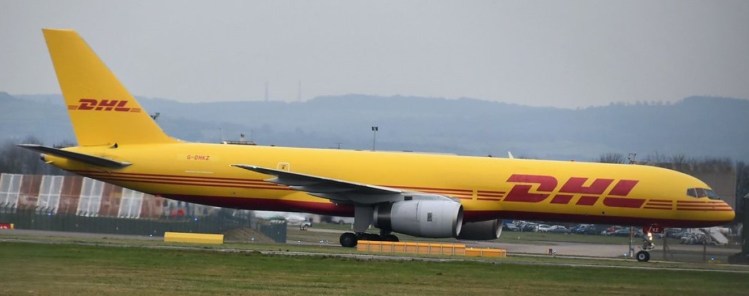For those of you who feel we may not yet be at the brink of World War III, check out this breaking news story about Russian operatives planning to plant explosive devices on aircraft bound for the United States. It’s like something out of a Cold War thriller, but unfortunately, it’s all true.
Recent accusations have sent shockwaves through international security and intelligence communities: Russians are alleged to have already attempted to plant bombs on planes bound for the United States and Canada. This revelation underscores the rising threat of covert sabotage aimed at destabilizing U.S. aviation security, igniting fears of renewed Cold War-style confrontations—this time, not just through cyber warfare or disinformation, but physical acts of terror.
The Allegations
U.S. intelligence sources claim to have intercepted credible threats suggesting that Russian agents sought to breach aircraft security protocols in an attempt to target commercial flights. While specific American airlines and airports were not disclosed, reports indicate that Russian operatives may have scouted and even approached ground crew members to exploit vulnerabilities during pre-flight procedures. Details are scarce, but officials believe the goal was to plant explosive devices covertly, with the intent to detonate them mid-flight. If successful, these attacks would represent a chilling escalation in modern warfare tactics, combining classic espionage with acts of terror aimed at causing mass casualties.
The German “Test Run”
In a sort of “test run,” the German logistics giant DHL was used to ship items that ignited at their Leipzig, Germany hub and in Birmingham, England, according to The Wall Street Journal (WSJ). The Journal reported that the explosions in these cases were caused by electric massagers that contained magnesium implants. Magnesium is highly flammable and burns at approximately 5,600° F. A magnesium fire would be extremely difficult to extinguish while airborne and would force a plane to make an emergency landing in the best-case scenario.
The massagers originated in Lithuania, and officials investigating the matter believe they are part of a much larger Russian plot. The fires occurred in July of this year, and multiple suspects have been arrested and charged with “sabotage or terrorist operations on behalf of a foreign intelligence agency.”, says WSJ. There are still two suspects on the run who have yet to be apprehended.
DHL has acknowledged these events and is working closely with law enforcement to tighten its security measures.
Security Response and Investigations
This plot has prompted a robust response from U.S. security agencies, leading to heightened screening protocols for flights originating from certain international hubs. The Transportation Security Administration (TSA) and Federal Bureau of Investigation (FBI) are now coordinating with foreign airport authorities to trace any involvement of local personnel. Additionally, airlines have been alerted to conduct thorough pre-flight inspections and engage in enhanced vetting of ground crew staff. Expect longer lines at TSA in the near future.
An investigation following the July fires uncovered similar magnesium-laden packages with delivery addresses in the United States and Canada. European security officials state that this is an apparent attempt to test North American security measures. Investigators state that they believe the packages accidentally caught fire while on the ground, and the intent of those sending them was for them to catch fire while the aircraft was in flight.
For those of you who feel we may not yet be at the brink of World War III, check out this breaking news story about Russian operatives planning to plant explosive devices on aircraft bound for the United States. It’s like something out of a Cold War thriller, but unfortunately, it’s all true.
Recent accusations have sent shockwaves through international security and intelligence communities: Russians are alleged to have already attempted to plant bombs on planes bound for the United States and Canada. This revelation underscores the rising threat of covert sabotage aimed at destabilizing U.S. aviation security, igniting fears of renewed Cold War-style confrontations—this time, not just through cyber warfare or disinformation, but physical acts of terror.
The Allegations
U.S. intelligence sources claim to have intercepted credible threats suggesting that Russian agents sought to breach aircraft security protocols in an attempt to target commercial flights. While specific American airlines and airports were not disclosed, reports indicate that Russian operatives may have scouted and even approached ground crew members to exploit vulnerabilities during pre-flight procedures. Details are scarce, but officials believe the goal was to plant explosive devices covertly, with the intent to detonate them mid-flight. If successful, these attacks would represent a chilling escalation in modern warfare tactics, combining classic espionage with acts of terror aimed at causing mass casualties.
The German “Test Run”
In a sort of “test run,” the German logistics giant DHL was used to ship items that ignited at their Leipzig, Germany hub and in Birmingham, England, according to The Wall Street Journal (WSJ). The Journal reported that the explosions in these cases were caused by electric massagers that contained magnesium implants. Magnesium is highly flammable and burns at approximately 5,600° F. A magnesium fire would be extremely difficult to extinguish while airborne and would force a plane to make an emergency landing in the best-case scenario.
The massagers originated in Lithuania, and officials investigating the matter believe they are part of a much larger Russian plot. The fires occurred in July of this year, and multiple suspects have been arrested and charged with “sabotage or terrorist operations on behalf of a foreign intelligence agency.”, says WSJ. There are still two suspects on the run who have yet to be apprehended.
DHL has acknowledged these events and is working closely with law enforcement to tighten its security measures.
Security Response and Investigations
This plot has prompted a robust response from U.S. security agencies, leading to heightened screening protocols for flights originating from certain international hubs. The Transportation Security Administration (TSA) and Federal Bureau of Investigation (FBI) are now coordinating with foreign airport authorities to trace any involvement of local personnel. Additionally, airlines have been alerted to conduct thorough pre-flight inspections and engage in enhanced vetting of ground crew staff. Expect longer lines at TSA in the near future.
An investigation following the July fires uncovered similar magnesium-laden packages with delivery addresses in the United States and Canada. European security officials state that this is an apparent attempt to test North American security measures. Investigators state that they believe the packages accidentally caught fire while on the ground, and the intent of those sending them was for them to catch fire while the aircraft was in flight.
The Russian Modus Operandi
For decades, Russia has been known for its extensive use of covert tactics to undermine its adversaries. Cyber attacks, disinformation campaigns, and the deployment of espionage assets are part of its standard playbook. However, a shift towards direct physical sabotage represents an aggressive step that brings Russia’s tactics into a new realm, potentially inviting global backlash. The choice of targeting U.S.-bound flights hints at both a willingness to provoke and a calculated effort to exploit soft targets within American infrastructure.
When confronted with accusations, Kremlin spokesman Dmitry Peskov had an odd reply. When asked for comment, he told the press, “We have never heard any official accusations of Russian involvement. These are traditional unsubstantiated insinuations from the media.”
WTF? They turn it back on the media? And that answer is definitely not a “no.” That is a very odd reply indeed.
It is still early, but some Western officials investigating the case believe the GRU, Russia’s military intelligence agency, to be behind the plot.
Implications for U.S. Aviation Security
The threat of bombs on commercial flights calls for a re-evaluation of current aviation security practices. U.S. aviation has not seen a major in-air sabotage incident in recent years, largely due to rigorous safety protocols developed post-9/11. However, if adversarial state actors are now willing to take on such direct and devastating measures, it could mean further restrictions, heightened personnel scrutiny, and an overhaul of airport security, especially for U.S.-bound flights from specific regions.
CT scanners, which provide 3-D images of baggage contents, are being tested and implemented at various US airports. They enhance the detection capabilities for explosives and other threat items at airport checkpoints.
Looking Forward
As U.S. authorities continue their investigation, the international community will be watching closely. Evidence of direct state involvement in this alleged sabotage would likely strain relations further, pushing the U.S. and Russia towards an even colder diplomatic impasse. For passengers and airline staff, it serves as a grim reminder of the persistent and evolving threats facing global travel—and the new age of covert warfare we may be entering.



